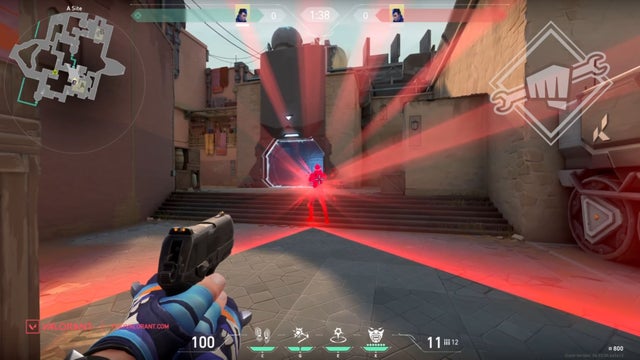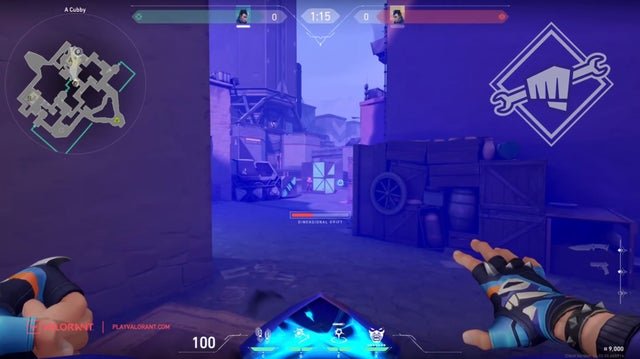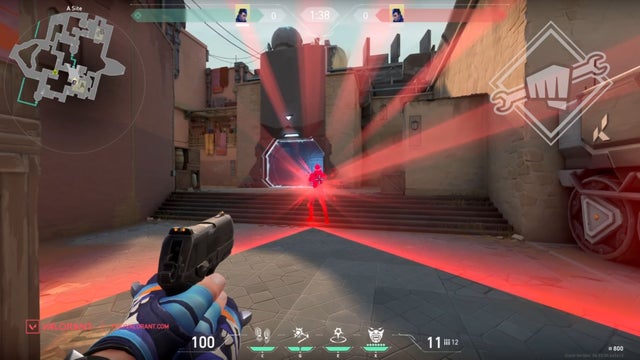Yoru, the game’s least popular agent, will get a major makeover in Valorant’s next major update. Yoru was originally intended to be a full-fledged lurker, but will now be more of a Duelist/Initiator hybrid build. IGN investigated why Yoru didn’t work and how the changes he’s undergoing will affect his popularity. Here’s what they unveiled-
About Yoru
A “lurker” isn’t an official archetype in Valorant, but Yoru’s original skills were designed to allow him to play as one – as stated by Riot as far back as late 2020, he was purposefully designed to lurk behind enemy lines, with his utility assisting in that mission. He ended up falling flat on his face.
Valorant had been out for over six months by the time Yoru was released, and with only a handful of agents and maps, players both professional and casual were quickly optimizing defensive and offensive strategies. Yoru’s equipment made him a predictable and thus ineffective character, unable to break through enemy lines. Bringing him into a match was more of a liability than a benefit, and with more versatile options available, he faded into obscurity and required an overhaul.
A look back at the old Yoru, in comparison to the reworked version
Fakeout is the name of his first skill. Sound is an important factor in locating enemies in Valorant, and this skill sent out fake footsteps to confuse or distract the enemy.
It’s difficult enough to “fake out” someone at higher levels of play, and most players try not to give away their position with audio queues like footsteps. Yoru’s use of this skill frequently resulted in him giving up more information by alerting players to his presence rather than gaining any intel for himself.

The new Fakeout is far more efficient, if not entirely new. Yoru summons a decoy clone (with fake footstep sounds) that advances until shot or disappears. If the clone is shot, it will face the enemy, explode, and blind them.
This results in a more powerful information-gathering tool that can also serve as a dueling option if you decide to engage in combat. This raises the skill to the level of other potential information gathering abilities, such as Raze’s Boombot or Reyna’s Leer.
Gatecrash
This is one ability that won’t change much – you can still teleport from one location on the map to another. The only change is a visual element representing where the Gatecrash used to be after Yoru teleports, which now leaves a small puddle in its wake. This puddle is meant to confuse the opposing team by indicating that he teleported — but where exactly did he go?
Dimensional Drift
Yoru’s ultimate was previously designed for you to press a button and run behind enemy lines to gather as much information as possible while remaining mostly invisible and making no footstep noise. Yoru was also unable to use any abilities, and his sight range was reduced, but he was unaffected.

Yoru is now completely invisible, has normal sight, and the enemy can hear Yoru’s footsteps.
The most significant change to the ultimate is that Yoru now has more options during the skilll because he can now use his abilities. This means he can cast his ult, drop a teleport deep into a bomb site, maneuver around, and choose a good spot to emerge – either where he is when his ult ends or jump to his previously placed portal. While opponents can hear Yoru’s footsteps, he is now completely invisible.
Will the rework be successful?
Yoru’s rework is coming along nicely. Riot has preserved the agent’s original identity by allowing Yoru to continue gathering information via Fakeout, and allowing him to cast his utility during his ultimate gives him a lot more flexibility in how he engages a fight. Yoru should be able to become a great secondary duelist pick or even a better entry into a site like Reyna or Phoenix as a result of this.
It’s difficult to say whether the rework is strong enough for Yoru to be considered for competitive or professional play, but with more reliable and team-centric utility, he should have a pick rate above 0%. (which has happened in pro play).
